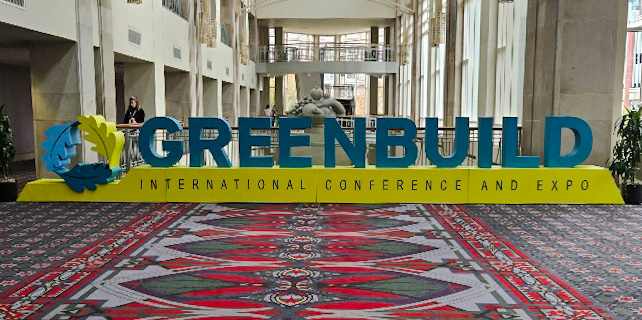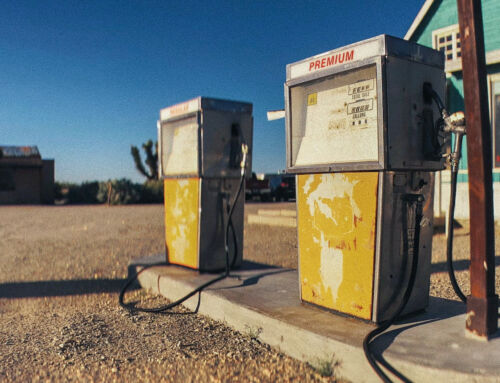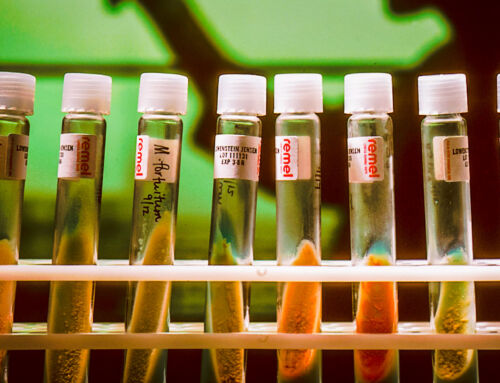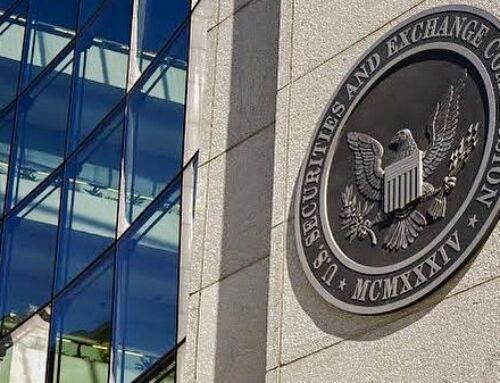View by Topic
Recent Articles
-
Congress Blocks California’s Gasoline Car BanSaturday, May 31st, 2025
-
EPA Will Keep Current Limits for “Forever Chemicals” in Drinking WaterSaturday, May 24th, 2025
-
Court Indefinitely Pauses SEC Climate Rule LitigationSaturday, May 17th, 2025
-
Maryland is About to Regulate Mold But is the Cart Before the HorseSaturday, May 10th, 2025
View by Month/Year
“Green Building Law Update” Headlines
Recent Articles & News from
Stuart Kaplow’s blog
at GreenBuildingLawUpdate.com
- Congress Blocks California’s Gasoline Car Ban: A Legal and Policy Analysis June 1, 2025
- EPA Will Keep Current Limits for “Forever Chemicals” in Drinking Water May 25, 2025
- Court Indefinitely Pauses SEC Climate Rule Litigation May 18, 2025
- Maryland is About to Regulate Mold: But is the Cart Before the Horse? May 11, 2025
Subscribe to the Green Building Law Update!
Stuart Kaplow brings his expertise and extensive experience to the table with his unique digital publication, "Green Building Law Update". Subscribers receive regular updates to keep them informed about important issues surrounding Environmental Law, Green Building & Real Estate Law, as well as the emerging demand for Environmental Social Governance (ESG).
Get fresh content through the lense of Stuart Kaplow's cutting-edge expertise, innovative commentary and insider perspective. Don't miss another issue! Subscribe below.

29 Billion Square Feet of LEED Certified Space and Counting
Last Thursday, during the 2024 Greenbuild International Conference and Expo, the U.S. Green Building Council unveiled its Impact Report: Accelerating Green Building to Improve Lives and Livelihoods. This comprehensive review celebrates three decades of innovation in sustainable building with a current capstone of more than 29 billion square feet of LEED certified space worldwide.
This report arrives at a fascinating time just preceding a new U.S. presidential administration in a period of huge technological and environmental change. It underscores the pivotal role of the USGBC and its globally recognized LEED (Leadership in Energy and Environmental Design) voluntary third party certified green building system in transforming the built environment to be more sustainable. LEED literally created the terms and phrases we use to describe green building.
The report is worth your read because through prioritizing innovation, today LEED is the world’s most widely used green building rating system.
A Global Movement in Numbers
The numbers are staggering:
• 195,000+ LEED projects spanning 186 countries
• 29 billion square feet of LEED certified space
• 547,000+ residential units meeting green standards
• 330+ LEED-certified Cities and Communities
• 5,000 certified schools, impacting the lives of eight million students
• A vibrant network of 5,300 USGBC member organizations
These achievements highlight the global adoption of LEED as the premier framework for designing, constructing, and operating sustainable buildings that not only meet our individual needs for security and shelter but also our societal needs for housing, education, workplaces, and recreation.
Yet, as USGBC President and CEO Peter Templeton aptly noted, the influence of the green building community extends far beyond infrastructure, “Our global community has shaped policy, shifted markets toward sustainable and healthy materials, inspired generations of professionals, and proven that the built environment can be a leading contributor to a better future for all.”
The Impact of LEED: More Than Just Green Buildings
Since its inception in 1998, LEED has set the gold (.. okay also certified, silver, and platinum) standard for green buildings. Its measurable impact in a typical LEED building includes:
• 25% reduction in energy consumption
• 34% decrease in carbon emissions
• 11% less water usage
The report notes that LEED certified projects across all certification levels are designed to save more than 120 million metric tons of CO2 emissions. That achievement is not enough for some, including the current crowd that demands only net zero buildings today and all electric buildings immediately in the name of climate change. But LEED was always much more than only about reducing greenhouse gas emissions. In the current version of the new constriction rating system, of all LEED credits:
• 35% relate to climate change
• 20% directly impact human health
• 15% impact water resources
• 10% affect biodiversity
• 10% relate to the green economy, and
• 5% impact community and natural resources.
When you ask people who go to school in, work in, or live in a LEED certified building they prioritize indoor air quality, chemicals and toxics in building materials, and drinking water quality. (.. none of which involve all electric buildings). This emphasis on the human health effects is not surprising given that on average people spend up to 90% of their time indoors, inside buildings.
Adapting to Meet Global Challenges
LEED’s evolution mirrors the changing priorities of our world. From its early focus on energy and water efficiency to addressing broader imperatives like resilience, human health, biodiversity, and equity, LEED has adapted to meet the unique needs of diverse building projects. And yes, there has been but will be in LEED v5, a greater emphasis on climate change.
Expansions like specialized certifications for schools, hospitals, and residential spaces have broadened its impact.
Equipping the Green Building Workforce
USGBC has played a vital role in building not only a skilled workforce to drive this transformation but also created a knowledge base to promote innovation. With over 205,000 credential holders worldwide, its educational programs, credentialing systems, and events like Greenbuild provide professionals with cutting edge knowledge and tools.
These efforts have fostered a global community of architects, engineers, yes lawyers, and other advocates committed to transforming how buildings are designed, built, and operated to create thriving, healthy, equitable, and resilient places that advance human and environmental well being.
Looking Ahead: LEED v5 and the Future of Green Building
The 2024 USGBC Impact Report is not just a celebration of past achievements, it’s a roadmap for the future, including the key initiative of launching LEED v5 in 2025, with an emphasis on building decarbonization, human health, and biodiversity.
LEED was conceived as and thrives as a “voluntary” system not mandated by governments. It flourishes where government offers incentives but is at risk when government perverts its proper mission to protect human health and the natural environment, like Maryland today moving toward all electric building to the detriment of all other human activity.
A Personal Reflection
As someone who has attended Greenbuild conferences for over 20 years, I’ve witnessed the growth of the green building movement firsthand. From its humble beginnings at the first USGBC “Green Building Conference” (.. yes, pre Greenbuild) held in conjunction with the National Institute of Standards in 1994 to the vibrant and expansive events of today, when more than 330,000 people have attended a Greenbuild, it has become “the” target rich environment for the exchange of ideas among green building professionals and the display of innovation and new applications by businesses.
This year, Greenbuild 2024 in Philadelphia marked a full circle moment, just a short drive from that inaugural conference in Gaithersburg, Maryland. It’s a testament to how far we’ve come, and how much more there is to achieve.
Final Thoughts
Green buildings, and LEED certified projects (yes, this post is being written during my train ride home from Greenbuild, but there are other very good if not great green building systems including Green Globes and the International Green Construction Code), which are about much more than only reducing carbon emissions. They represent a comprehensive approach to sustainability that addresses human health, resilience, equity, biodiversity, and more.
The occupants of our planet are better served by more green buildings rather than some small number of net zero effigies.
We know there is also a business case to be made when LEED certified buildings almost always achieve higher resale values, command increased rent premiums, higher occupancy rates, and maintain stronger investment potential, all as detailed in the report.
The 29 billion square feet of LEED certified space across the globe is a powerful reminder of what’s possible when a global community unites around a shared vision. As we look to the future, it’s clear that green building is not just a strategy, it is a journey driven by the idea that the way we build today shapes the way we live tomorrow.
Read the full USGBC Impact Report here.
The most important takeaway is you should be constructing LEED certified buildings. And consider joining all the “green people” attending Greenbuild on November 4, 2025, in Los Angeles. Together, we can continue to repair the planet building a better future for all.
___________________
Please join us for our next webinar “Is Carbon Footprint Dead” on Tuesday, November 26 from 9 – 9:30 am ET presented by Stuart Kaplow. The webinar is complimentary, but you must register here.









